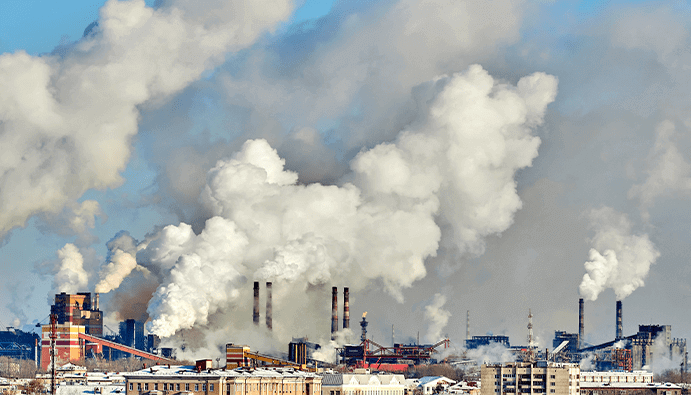Mass Concentration of Each Gaseous Organic Compound
Flue Gas Stationary Source Emissions - Determination of the Mass Concentration of Each Gaseous Organic Compound

Flue Gas Stationary Source Emissions
The CEN/TS 15675 standard, a European standard, regulates the principles for the determination of air quality, measurement of stationary source emissions and the application of the EN ISO/IEC 17025 standard to periodic measurements. Another European standard, BS EN 15259, also describes the requirements for the determination of air quality, measurement of stationary source emissions and measurement sections, sites, measurement target, plan and report.
The ability of advanced laboratories to measure and report on flue gas stationary source emissions depends on operating in accordance with these two basic regulations. Having achieved this, the test method to be applied for the determination of the mass concentration of organic compounds is described in the CEN/TS 13649 standard. This standard has been published in our country by the Turkish Standards Institute (TSE) under the following title:
TSE CEN / TS 13649 Constant source emissions - Determination of the mass concentration of each gaseous organic compound - Sorptive sampling method followed by solvent extraction or thermal.
What is the Scope of TSE CEN/TS 13649?
- Measurement of Gas Flow Rate: This standard specifies how to measure the flow rate of gases from stationary sources. The process of determining the velocity of the gas is usually done using pitot tubes or other measurement probe methods.
- Calculation of Gas Flow Rate: Gas flow rate is the ratio of the volume through which the gas passes at a given point in time. After the flow rate is measured, the flow rate is calculated by making certain temperature and pressure corrections.
- Emission Monitoring and Calibration: Covers the specific requirements for calibration and maintenance of measurement equipment to ensure accurate and reliable results. This is very important for environmental monitoring and emission control.
- Data Management and Reporting: The standard states that collected data should be regularly recorded and analyzed, ensuring accurate reporting of emission values. These reports are critical for environmental management plans and audits.
What are the Application Areas of TSE CEN/TS 13649?
- Industry and Industrial Plants: In sectors such as chemical industry, energy production, metal processing, gas flow and emissions must be accurately monitored. This standard helps to improve environmental management in industrial plants.
- Environmental Monitoring and Auditing: Environmental agencies, municipalities and other inspection organizations monitor emission measurements by applying these standards when inspecting facilities for compliance with environmental legislation.
- Air Quality Improvement: Measuring harmful gases from stationary sources helps to protect air quality. This standard plays an important role in combating air pollution and climate change.
What are the Measurement Methods Used in the Standard?
- Pitot Tubes: It is one of the most common methods used to measure the velocity of gas from stationary sources. Pitot tubes determine the velocity of the gas, which is then used to calculate the flow rate.
- Temperature and Pressure Corrections: The temperature and pressure conditions of the gas can affect the accuracy of measurements. Therefore, temperature and pressure corrections are made and the results are brought in line with standard conditions.
- Data Collection and Analysis: The collected data is recorded in digital systems for continuous monitoring of emissions. This data is used in environmental management systems.
Nanolab Laboratories Group continues to provide services within the scope of Determination of Mass Concentration of Each Organic Compound in Gaseous State. We also provide services in Emission - Imission Measurements.
Contact us for more information.
You can follow us on LinkedIn for up-to-date news and posts about our services.
Follow our Instagram account to be informed about our latest blog posts.

